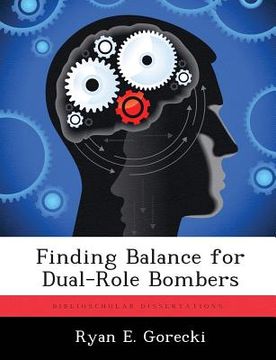Share
Finding Balance for Dual-Role Bombers (in English)
Ryan E. Gorecki
(Author)
·
Biblioscholar
· Paperback
Finding Balance for Dual-Role Bombers (in English) - Gorecki, Ryan E.
$ 48.80
$ 57.95
You save: $ 9.15
Choose the list to add your product or create one New List
✓ Product added successfully to the Wishlist.
Go to My WishlistsIt will be shipped from our warehouse between
Friday, June 28 and
Monday, July 01.
You will receive it anywhere in United States between 1 and 3 business days after shipment.
Synopsis "Finding Balance for Dual-Role Bombers (in English)"
The purpose of this paper is to identify some concepts that nuclear enterprise leaders might choose to use in achieving balance for dual-role strategic bombers. Dual-role bombers face a unique demand of having to maintain a high state of readiness in both the nuclear and conventional missions. In order to identify some useful concepts, this study reviews three erasthe Vietnam conflict, the time between Vietnam and through the Persian Gulf War, and the contemporary time periodin order to discover some methods used by leaders in the past to achieve balance amongst competing requirements. From 1965 to 1972, B-52 leaders utilized in-theater training to prepare bomber crews for combat. These crews developed and distributed lessons learned, which Strategic Air Command (SAC) incorporated into a specially designed Remote Training Unit created to prepare crews for combat in Southeast Asia. The nuclear mission suffered as resources were siphoned off to support the conflict in Vietnam, but Strategic Air Command was able to replenish some bases with necessary personnel once they were made aware of the difficult demands facing bomber leaders. Fortunately, there was direct transfer between nuclear and conventional weapon skill-sets. Following Vietnam, the B-52 force acquired additional weapons and missions and achieved balance through the flexible use of training processes. Wing commanders were given the flexibility to tailor training in order to meet critical mission requirements. Unfortunately, despite carrying a conventional mission, not all bombers trained equally to this task, leading to varying levels of success in the Persian Gulf War. Bomber leaders utilized routine unit training, pre-deployment training, and in-theater training to prepare B-52 crews for combat. After the war, SAC was replaced by a new command and a new focus for the expected future use of bombers.
- 0% (0)
- 0% (0)
- 0% (0)
- 0% (0)
- 0% (0)
All books in our catalog are Original.
The book is written in English.
The binding of this edition is Paperback.
✓ Producto agregado correctamente al carro, Ir a Pagar.

